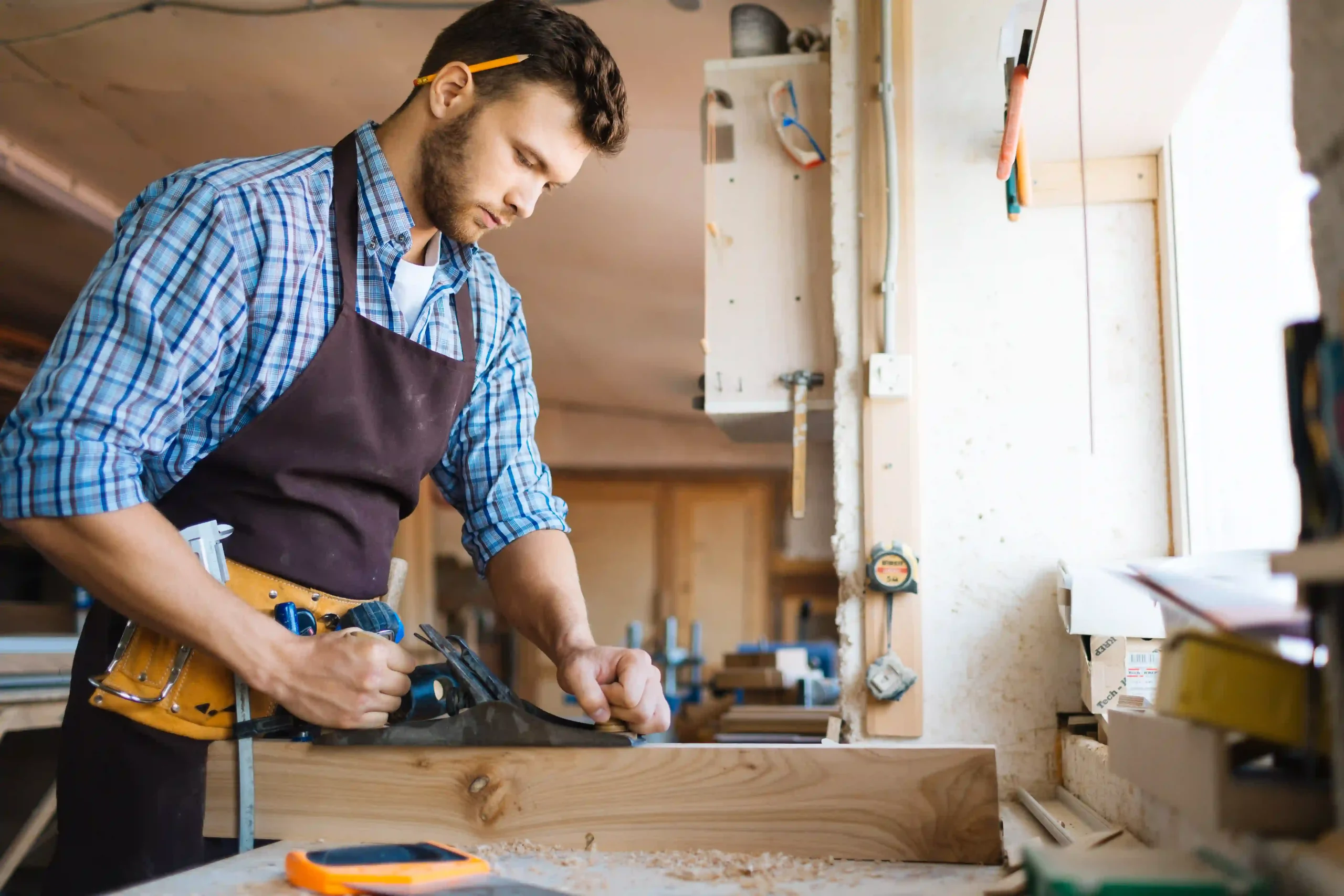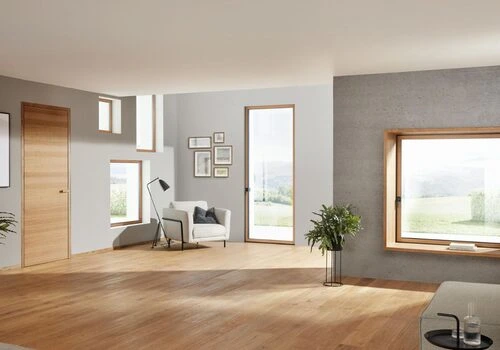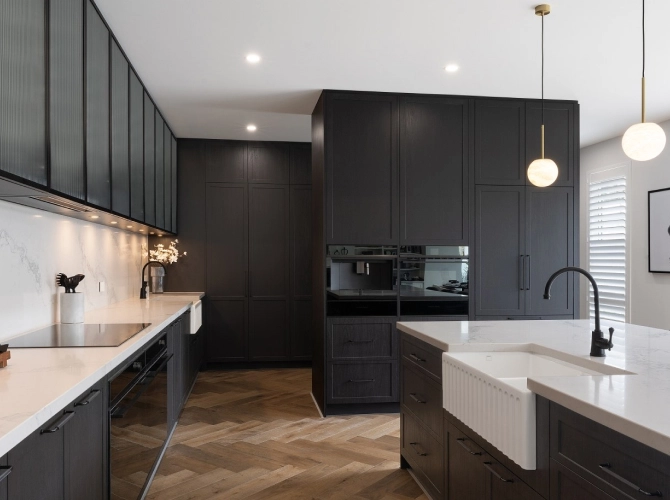Ever feel like your Sydney home is playing sardines with style and space? I sure have. When I moved into my Bondi studio apartment, I thought a comfy Hamptons vibe was out of reach – until I teamed up with a clever carpenter in the Eastern Suburbs of Sydney. You’d be amazed how smart carpentry tricks can transform even the tiniest terrace. Call it a mini-reno or a style hack: good carpentry is in hot demand. These days, Sydneysiders want space-conscious, stylish solutions that feel personalised. Whether it’s built-in storage or a sleek timber feature, a local Carpenter Eastern Suburbs Sydney can turn your little shoebox of a home into an organised, stylish oasis. Stick around – we’ve got practical tips, clever ideas, and expert insights straight from the tools of Eastern Suburbs carpenters.
Why Modern Interior Design Matters in Sydney Homes
Modern living in Sydney means embracing open-plan layouts and minimalist chic – but with a unique Aussie twist. We love bright, airy spaces that echo our outdoor lifestyle. For example, Coastal and Hamptons styles are huge here, favouring light hues and breezy features to mirror the beachside vibe. But not every home is a spacious North Shore mansion. Even if your flat is as snug as two car spaces (Sydney’s studios legally must be ≥35m²), you still want it to look chic. That’s why blending function and flair is key. You might not squeeze a Hamptons mansion into a Bondi apartment – but you can fake the look with clever carpentry. Think Scandinavian simplicity or classic Hamptons details, reinterpreted for a compact East Sydney flat. The secret? Open, airy layouts and smart furniture that honour your lifestyle. Designers note Australian spaces often mix modern and traditional elements, creating rooms that feel both timeless and trendy. In short, smart modern interior design in Sydney homes is about maximising comfort and style. Personalise your space – after all, a sleek built-in wardrobe or a custom wood feature can make a modest room feel uniquely yours. (After all, sustainable local materials and craftsmanship add a special Aussie authenticity.)
Custom Timber Furniture to Instantly Elevate Your Sydney Home
There’s something magical about timber in a home – it instantly warms up a space. Wood’s natural grains and tones bring character and an organic feel that mix well with any style. Picture this: you add exposed ceiling beams or a built-in oak window seat. Suddenly, even a plain white room feels cozy and well-designed. Ever considered a statement wooden staircase or floating shelves in the lounge? These custom timber elements are hallmarks of high-end interiors. For example, [Imagine this before-and-after setup…]* *Insert image suggestion: “Before-and-after shot of a living room with custom timber shelving.” *After fitting wall-to-wall wooden shelves and paneling, the living room looks like an entirely new space.
Want your interiors to feel grounded, warm, and unmistakably Aussie? Lean on local timbers for authenticity. Australian hardwoods like spotted gum, blackwood, and jarrah aren’t just strong and long-lasting — they come with character built in. Each grain tells a story of our landscape, climate, and craftsmanship. Choosing locally-sourced timber not only elevates your design but also supports skilled Aussie artisans and reduces the environmental footprint of your build. For an extra layer of integrity, look for timber that’s certified sustainable by organisations like Responsible Wood — so your project looks good and does good too.
Clever Storage Hacks by Carpenter Eastern Suburbs Sydney
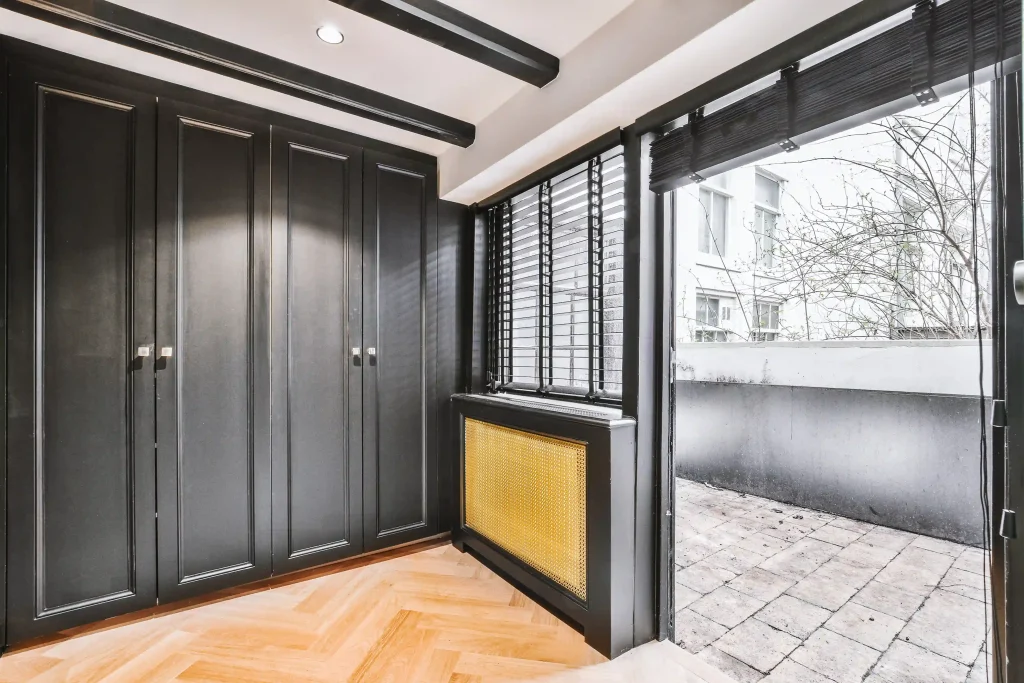
We all know clutter is the nemesis of style. In tight Sydney homes, built-in solutions are gold. Think multi-functional pieces and hidden nooks. Ever wished your bed could double as a closet? Well, your local carpenter Eastern Suburbs Sydney can make it happen. Or how about a staircase with drawers instead of risers? That’s dreamland in a micro-flat.
- Multi-purpose furniture: Look for pieces that pull double duty (sofa-bed, anyone?). Carpenters can custom-make ottomans with storage chests or wall beds that fold into a cabinet.
- Hidden cabinetry: Use every crevice – imagine a secret spice rack in the kitchen or pull-out shelves in narrow gaps.
- Built-in wardrobes: A wardrobe tailored to your room shape (even under an angled ceiling) crushes dead space and looks sleek.
| Feature | Traditional Storage | Built-In Solutions |
| Space Efficiency | Moderate | High |
| Customisation | Low | High |
| Cost | Lower upfront | Greater long-term value |
(We’ve all seen skinny free-standing wardrobes wobble in a rental – built-ins invest in the space.) Because not everyone has a Kardashian-sized walk-in, creative carpentry is the answer. For example, I’ve seen a hallway turned into a mini-laundry: the washer slides under a bench, while cabinets above disguise the plumbing. All thanks to a good carpenter in the Eastern Suburbs. These space-saving hacks turn cramped areas into functional storage without clutter.
Bespoke Furniture Pieces to Transform Your Sydney Home
Statement furniture should be the hero, not the afterthought. A handcrafted dining table, coffee table or entertainment unit can anchor a room. “I once saw a dining table made from reclaimed railway sleepers – it was the hero of the whole room,” I told a mate recently. That anecdote got a laugh, but it’s true: unusual bespoke pieces become conversation starters and define your decor.
When choosing a feature item, consider wood species, finish, and scale. A massive farm-style table feels epic in a large open dining area, but a slim timber console might fit a cosy apartment better. Timber species matter too: golden oak for warmth, dark walnut for drama, or raw pine for a rustic touch. Think finishes – matt or gloss, natural grain or painted – all to match your vibe. For instance, Australian cedar offers great outdoor durability if you want an indoor-outdoor look, while Tasmanian oak (a local favorite) brings a light, airy feel.
Before spending a fortune, ask yourself: How do I want to use this piece? A built-in media unit with concealed wiring looks sleek in a lounge, or a custom coffee table with drawers can sneakily house remotes and coasters. Check out our (hypothetical) gallery of bespoke designs for inspiration. And remember to measure twice! Nothing kills the mood like furniture that’s too big and blocks walkways.
Small-Space Solutions for Sydney Apartments and Townhomes
Sydney apartments are famously compact, especially in trendy areas. Designing smart furniture and layouts is a must. Have you ever seen a built-in bench that doubles as shoe storage? Or a fold-away desk that disappears into a cabinet? These tricks save precious floor space.
I remember a tiny Paddington terrace that felt like a shoebox – but the carpenter managed to fit a fold-down dining table against a wall and vertical shelves that reached the ceiling. It was absolute magic. Because living here means sometimes working with realistically small footprints – not everyone has a walk-in closet the size of a studio!
For apartments, go vertical: tall, skinny bookcases, loft beds with storage under them, and wall-mounted fold-out desks. Even a mirror on a cabinet door can make a hallway feel larger. In studios, use screens or partial partitions to define zones without clutter.
(Sydney fact check: studios here must be at least 35m² by code, so the average kitchen-lounge-bedroom combo is tight. Every cupboard or shelf counts.) Clever carpentry is what makes these micro-homes livable. A carpenter Eastern Suburbs Sydney told me once, “in Sydney, if you can store it out of sight, you’ve basically got an extra room.” It sounds cheeky, but it’s spot-on.
How to Work with a Carpenter Eastern Suburbs Sydney for Interior Projects
Ready to start? Working with a carpenter is a bit like inviting a collaborator into your home. Here are some friendly steps:
- Define your needs: Jot down what’s bothering you – “I need more shelf space” or “I want a feature wall.” Show pictures of styles you love (Houzz and Instagram are great for this).
- Set a budget: Be clear on what you can spend. Saying “I’m up to X” helps your carpenter suggest the best materials. Remember, quality craftsmanship pays off.
- Collaborate on the design: Good carpenters often sketch ideas (don’t be shy to ask). Go through measurements and placement together. If a cabinet will sit under a window, double-check heights. Communication is key – feel free to share feedback or even Pinterest boards.
- Agree on timeline and expectations: Carpentry can take time. Agree on milestones (e.g. “framework done by week 1, paint finish by week 2”) so both sides know what to expect.
Above all, talk openly. Don’t stress about asking a lot of questions. Carpenters have seen it all (yes, the weird requests too) – it’s their job to figure out how to make your vision real. And remember: you don’t have to be an expert. A savvy carpenter Eastern Suburbs Sydney will guide you on materials and finishes – just keep the conversation flowing.
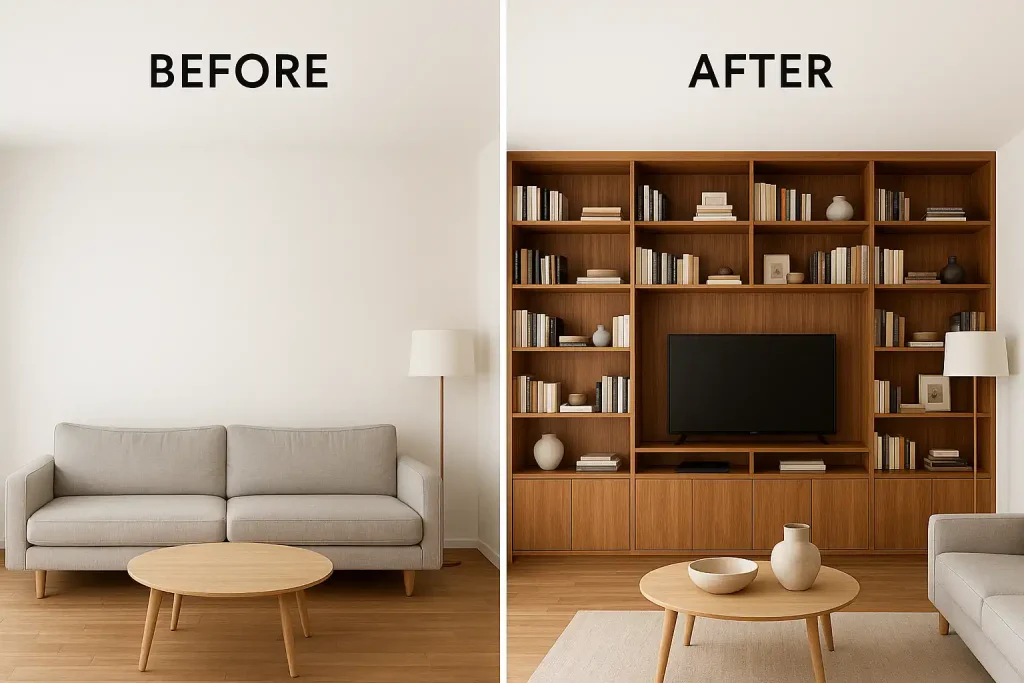
Pro Tips to Keep Your Interiors Trendy (Without Overdoing It!)
Trends are fun, but you want a home that lasts. Balance is everything. Think classic + accent: pair timeless basics (white walls, neutral sofa) with one or two bold pieces (a patterned rug, a bright throw). Textures matter: mix soft linens, smooth stone, and warm wood to avoid flat, lifeless spaces. Greenery (plants) adds instant life and ties in with Aussie biophilic trends.
Speaking of trends, 2024 is big on sustainability and “bringing the outside in.” Eco-friendly materials and plant-filled nooks are popular, aligning with Australia’s sustainable forest management policies. But also know that some styles cycle. For instance, modern “silver tones” (chrome or mirror accents) are in vogue now, but designers advise using those in easily-changeable decor (like cushions or vases) – you can swap them out as tastes change.
In short, keep your core pieces neutral (timeless) and sprinkle in trendy finds lightly. Yes, timber panelling is back, but no, you don’t have to turn your home into a log cabin. Maybe add just one feature wall instead of cladding every room. And if you love a trend, mix it with something evergreen. Who knows? Your home could end up on someone’s inspiration board!
Ready to Revamp with a Carpenter Eastern Suburbs Sydney?
We’ve covered a lot – from the big-picture importance of modern design in Sydney to nitty-gritty tips on storage and statement furniture. The key takeaway? Personalisation. Your Eastern Suburbs home should feel uniquely yours. Custom carpentry is the secret sauce that blends style with function.
So, is it time to bring in a pro? If you’ve been dreaming of that built-in wardrobe, a clever under-stairs desk, or a sleek timber feature, maybe it’s time to pick up the phone. A skilled Carpenter Eastern Suburbs Sydney can sketch your ideas to life, maximizing both space and style. Whether it’s a cosy unit in Coogee or a terrace in Paddington, the right custom piece will make your home look and work better. Go on, give your home the upgrade it deserves – your local carpenter is ready to help.
Frequently Asked Questions
What services does a carpenter Eastern Suburbs Sydney offer for interior projects?
A carpenter Eastern Suburbs Sydney can provide custom timber furniture, built-in wardrobes, shelving, clever storage solutions, kitchen and bathroom cabinetry, entertainment units, and general joinery. Basically, anything wood or cabinetry inside your home – from custom tables to fitted bookcases – can be created by a skilled local carpenter.
How much does custom carpentry cost in Eastern Suburbs Sydney?
Costs vary widely by project. Minor custom tweaks (like a single shelf or small repair) might start at a few hundred dollars. Larger jobs (fitted wardrobes, custom kitchen joinery, room renovations) can run into the thousands. Generally, expect budget-friendly quotes for simple installs, and higher sums for premium timber and complex design. Always get detailed quotes – the exact price depends on materials, labour, and design complexity.
How do I choose the right carpenter Eastern Suburbs Sydney for my project?
Look for a carpenter with solid experience and good reviews. Check their portfolio of past jobs (especially projects similar to yours) and ask for client references. Ensure they have proper licences and insurance. Communication is crucial: a great carpenter listens to your ideas and explains options clearly. If they’re easy to talk to and understand your vision, you’ll likely have a smooth build process.

